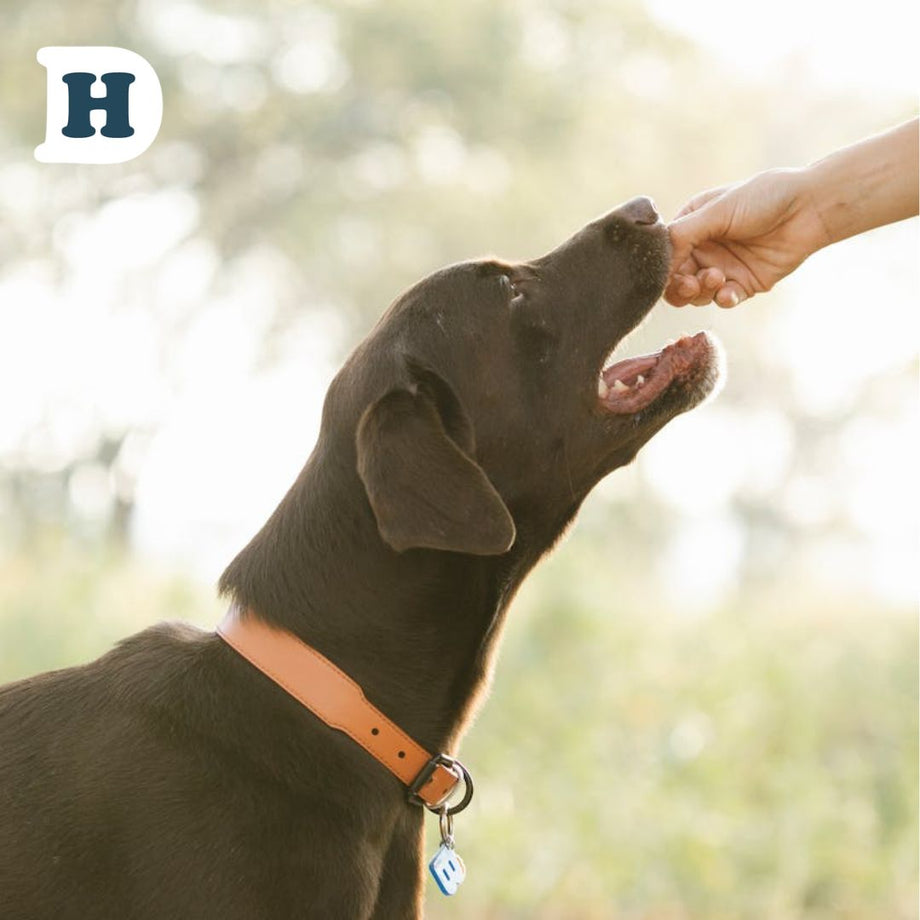 Welcome to the ultimate guide on feeding bones to your furry friend! As a responsible pet owner, you want to provide the best nutrition for your beloved companion, but when it comes to bones, there's a lot of misinformation out there.
Welcome to the ultimate guide on feeding bones to your furry friend! As a responsible pet owner, you want to provide the best nutrition for your beloved companion, but when it comes to bones, there's a lot of misinformation out there.
Should you give your dog bones or not? Which bones are safe, and which ones should be avoided at all costs?
In this comprehensive article, we'll delve deep into the dos and don'ts of feeding bones to your furry friend, taking into consideration their breed, age, and size.
We'll debunk common myths and provide expert advice from veterinarians and animal nutritionists to ensure that you make the right choices for your pet's health and well-being.
So, if you're ready to unleash the truth about feeding bones to your furry friend, let's dive in and give your pet the nutritional care they deserve!
The Importance of Proper Nutrition for Dogs
Naturally, here at Delivery Hound HQ we are advocates of proper nutrition being essential for the overall health and well-being of your furry friend. Just like humans, dogs require a balanced diet to thrive. A nutritious diet provides them with the necessary vitamins, minerals, proteins, and fats to support their bodily functions and maintain a strong immune system. A healthy and nutritious diet such as Man's Best for Dogs can also help prevent various health issues such as obesity, diabetes, and skin problems.
However, it's important to note that not all foods are suitable for dogs. Some human foods can be toxic to them, while others may not provide the right nutritional value. While bones have their place when it comes to providing a balanced diet, this is where the debate about feeding bones to dogs comes into play.
The Debate About Feeding Bones to Dogs
Feeding bones to dogs has been a topic of debate among pet owners and experts for years. On one hand, some argue that bones can provide several benefits to dogs. Chewing on bones can help keep their teeth clean and reduce the risk of dental problems. Bones also provide mental stimulation and can satisfy a dog's natural instinct to chew.
On the other hand, there are risks associated with feeding bones to dogs. Bones can splinter and cause serious injuries to your pet's mouth, throat, or digestive system. They can also lead to choking hazards or blockages in the intestines, which may require surgical intervention.
The Risks of Feeding Bones to Dogs
Before deciding whether to feed bones to your furry friend, it's important to understand the risks involved. One of the main risks is the potential for bone splintering. When dogs chew on bones, they can break them into sharp fragments that can cause punctures or tears in their mouth, esophagus, or gastrointestinal tract. These injuries can be extremely painful and may require emergency medical attention.
Another risk is the possibility of choking or blockages. Small bones or bone fragments can become lodged in a dog's throat, leading to choking. In some cases, bones can also get stuck in the intestines, causing an obstruction. This can be a life-threatening situation and may require surgery to remove the blockage.
Signs of Bone-Related Health Issues in Dogs
It's important to be aware of the signs and symptoms of bone-related health issues in dogs. If your furry friend has ingested a bone or is experiencing any discomfort, watch out for the following signs:
1. Difficulty breathing or swallowing
2. Excessive drooling
3. Loss of appetite
4. Vomiting or diarrhea
5. Abdominal pain or bloating
6. Lethargy or weakness
If you notice any of these symptoms, it's crucial to seek immediate veterinary care.
Alternatives to Feeding Bones to Dogs
If you're concerned about the risks associated with feeding bones to your dog, there are several safe alternatives that can provide similar benefits. One popular alternative is giving your pet chew toys or dental chews specifically designed for dogs. These toys and chews are made from materials that are safe for dogs to chew on and can help promote dental health.
Another option is feeding your dog rawhide chews. However, it's important to choose high-quality rawhide that is digestible and doesn't contain harmful chemicals. Always supervise your dog while they are chewing on rawhide and discard any small or broken pieces.
The Do's of Feeding Bones to Dogs
If you decide to feed bones to your furry friend, there are several important do's to keep in mind. These guidelines can help minimize the risks and ensure that your pet can safely enjoy the benefits of chewing on bones:
1. Always choose raw bones: Cooked bones can splinter easily, so it's crucial to only give your dog raw bones. Raw bones are softer and less likely to break into sharp fragments.
2. Select the right size: Make sure to choose bones that are appropriate for your dog's size. Large bones can be too hard for small dogs to chew on, while small bones can be a choking hazard for larger breeds.
3. Supervise your dog: Never leave your dog unattended while they are chewing on bones. Keep an eye on them to ensure they don't break off small pieces or swallow large chunks.
4. Dispose of bones properly: Once your dog has finished chewing on a bone, dispose of it immediately. This will prevent them from swallowing small pieces or trying to chew on a bone that is too small or brittle.
The Don'ts of Feeding Bones to Dogs
Equally important are the don'ts of feeding bones to dogs. These guidelines can help you avoid potential risks and ensure the safety of your furry friend:
1. Don't give cooked bones: Cooked bones are more likely to splinter and can cause serious injuries. Always stick to raw bones.
2. Avoid weight-bearing bones: Weight-bearing bones, such as beef knuckles or marrow bones, are extremely hard and can damage your dog's teeth. Opt for softer bones instead.
3. Don't feed small, brittle bones: Small bones, like chicken or fish bones, can easily splinter and pose a choking hazard. Avoid giving these to your dog.
4. Never give bones to aggressive chewers: If your dog is an aggressive chewer or tends to swallow large pieces without chewing, it's best to avoid feeding them bones altogether.
Safe Bone Options for Dogs
Although feeding bones to dogs carries risks, there are some safer options available. If you're considering giving bones to your furry friend, here are a few safe options to consider:
1. Raw beef bones: Raw beef bones, such as knucklebones or femurs, can be a suitable choice for larger dogs. Make sure to choose bones that are appropriately sized and supervise your dog while they chew.
2. Raw lamb bones: Lamb bones, such as rib bones or neck bones, are softer and more easily chewed. These can be a good option for smaller dogs or puppies.
3. Raw turkey necks or legs: Turkey necks are a great source of natural calcium and can provide a satisfying chewing experience for dogs. However, make sure to remove any excess skin or fat before giving them to your pet.
Remember, even with these safer options, it's crucial to follow the do's and don'ts mentioned earlier to ensure the safety of your furry friend.
Tips for Safely Feeding Bones to Dogs
If you decide to feed bones to your dog, here are some additional tips to ensure their safety:
1. Introduce bones gradually: Start with small pieces or bones and gradually increase the size as your dog becomes more comfortable and experienced with chewing.
2. Monitor your dog's chewing habits: Pay attention to how your dog chews on bones. If they are breaking off large chunks or swallowing bone pieces without chewing, it's best to discontinue bone feeding.
3. Regularly inspect bones: Before giving bones to your dog, inspect them for any signs of damage or splintering. If you notice any issues, discard the bone immediately.
4. Consult with your veterinarian: Every dog is unique, and what works for one may not work for another. Consult with your veterinarian to determine if feeding bones is the right choice for your furry friend based on their specific health needs and requirements.
By following these tips and guidelines, you can make an informed decision about whether or not to feed bones to your furry friend.
Making the Best Choice for Your Furry Friend
Feeding bones to dogs can be a controversial topic, but with the right knowledge and precautions, it can be done safely. Proper nutrition is essential for your dog's health, and while bones can provide benefits such as dental hygiene and mental stimulation, they also carry risks. It's crucial to understand the do's and don'ts of feeding bones to dogs and to carefully consider the alternatives available.
Ultimately, the best choice for your furry friend depends on their individual needs and preferences. Whether you decide to feed bones or opt for safer alternatives, always prioritise your dog's health and well-being. Consult with your veterinarian for personalised advice and recommendations based on your pet's specific requirements.
Remember, as a responsible pet owner, you have the power to provide your furry friend with a nutritious and balanced diet. With proper care and attention, you can ensure that your beloved companion stays healthy, happy, and safe. So, unleash the truth about feeding bones to your furry friend and make informed decisions that will benefit their overall well-being.
©deliveryhound.com.au 2023






